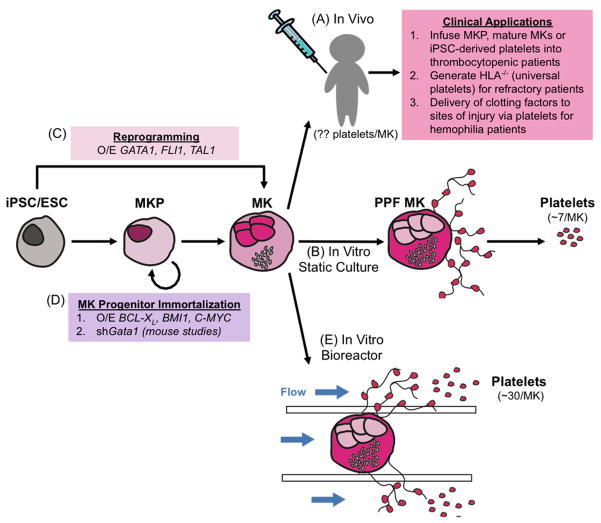Figure 1.
Current Methods for Generating Stem Cell-Derived Platelets (A) Megakaryocytes infused into human patients have the potential to act as an in vivo bioreactor, as seen in mouse studies. Megakaryocytes infused into mice release ~30 platelets/megakaryocyte. (B) In static culture, megakaryocytes differentiated from iPSCs and ESCs form proplatelets. The shed platelets can be purified from the culture medium by centrifugation. This method yields ~7 platelets/megakaryocyte. (C) iPSCs and ESCs can be driven to the megakaryocyte lineage through overexpression of GATA1, FLI1, and TAL1. (D) Megakaryocyte progenitors can be expanded by overexpressing BCL-XL, BMI1, and C-MYC. In mice, these progenitors are expanded by knockdown of Gata1. (E) In vitro platelet bioreactors enhance proplatelet formation in megakaryocytes via endothelial cell contacts, extracellular matrix components, and shear stress. This method yields ~30 platelets/megakaryocyte. MKP, megakaryocyte progenitor; MK, megakaryocyte; PPF MK, proplatelet forming megakaryocyte.

